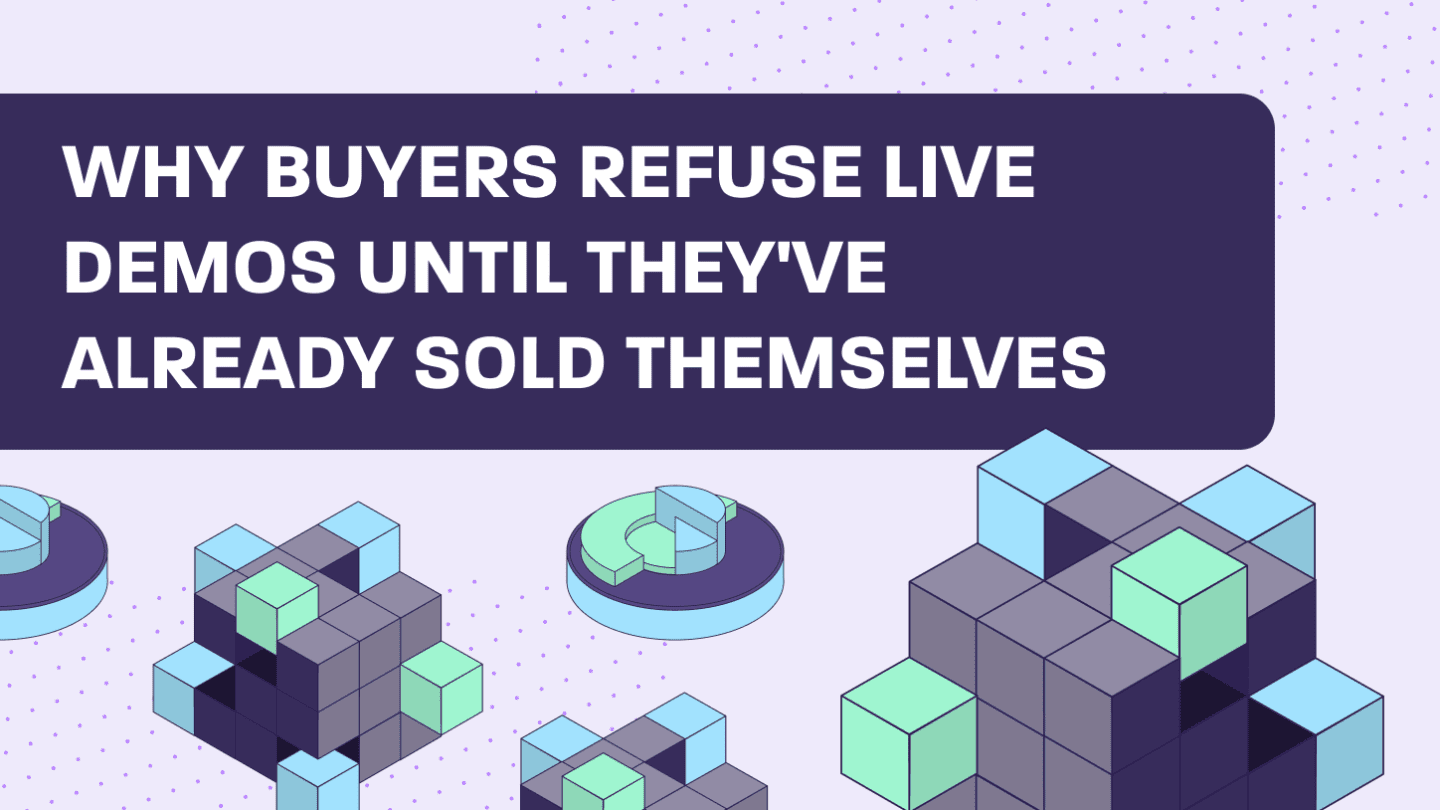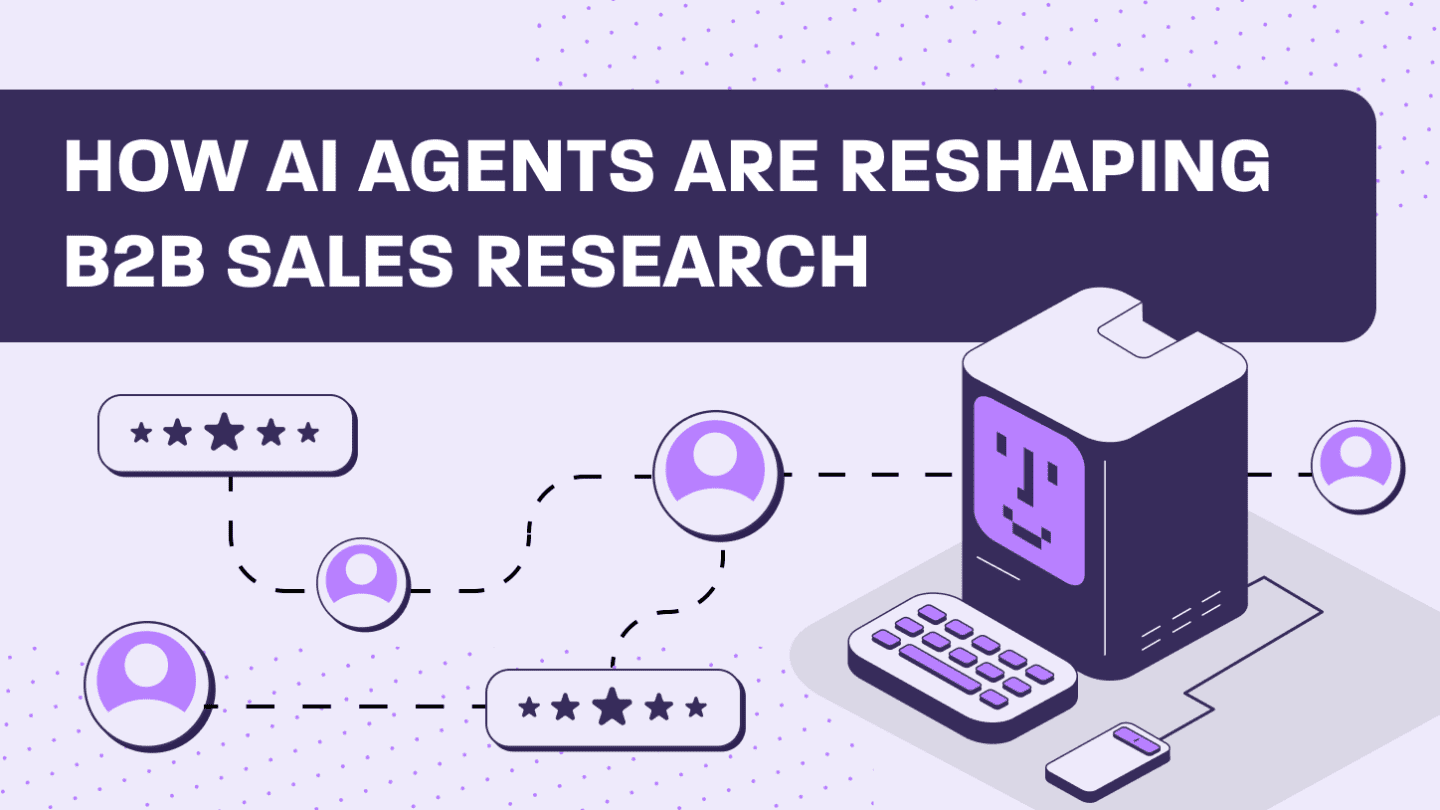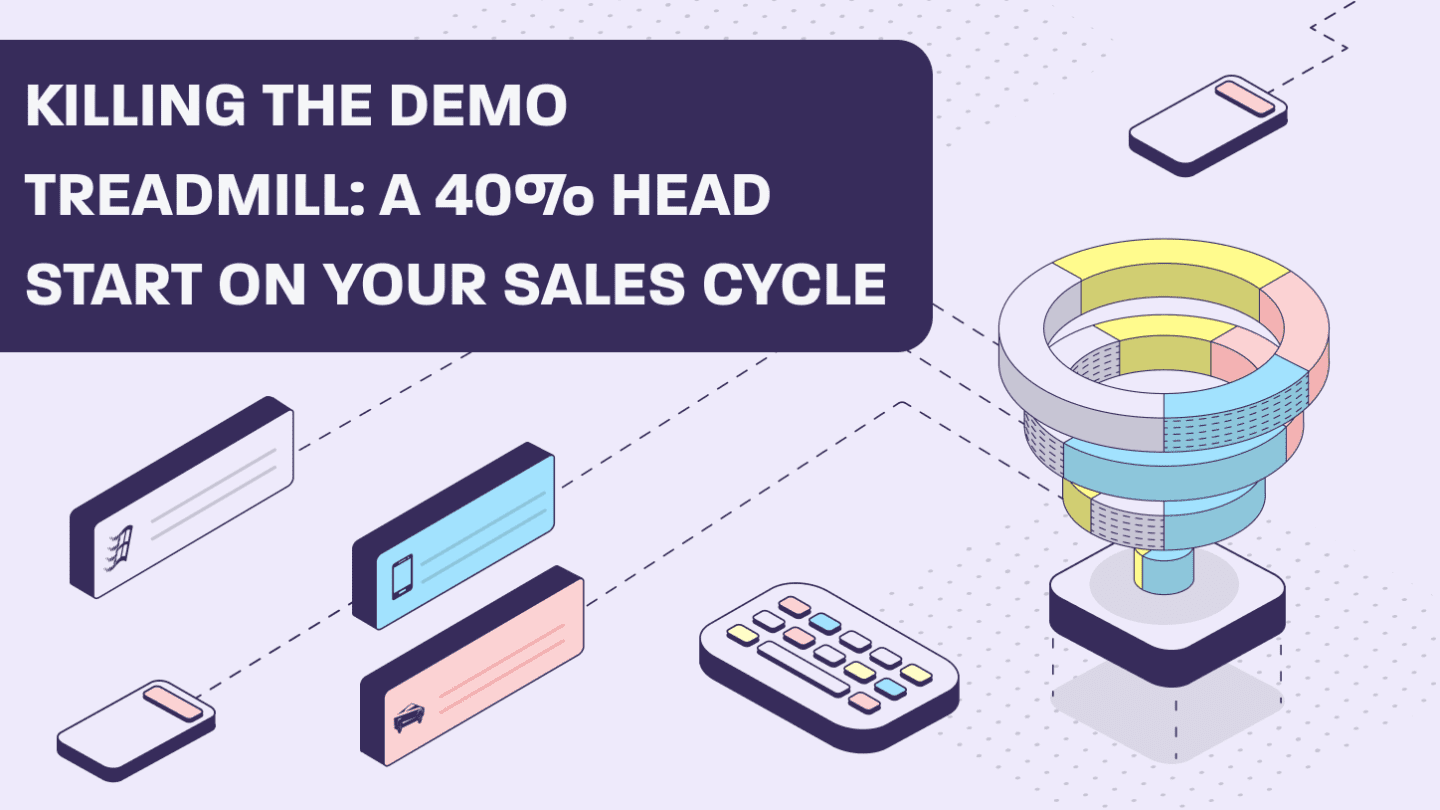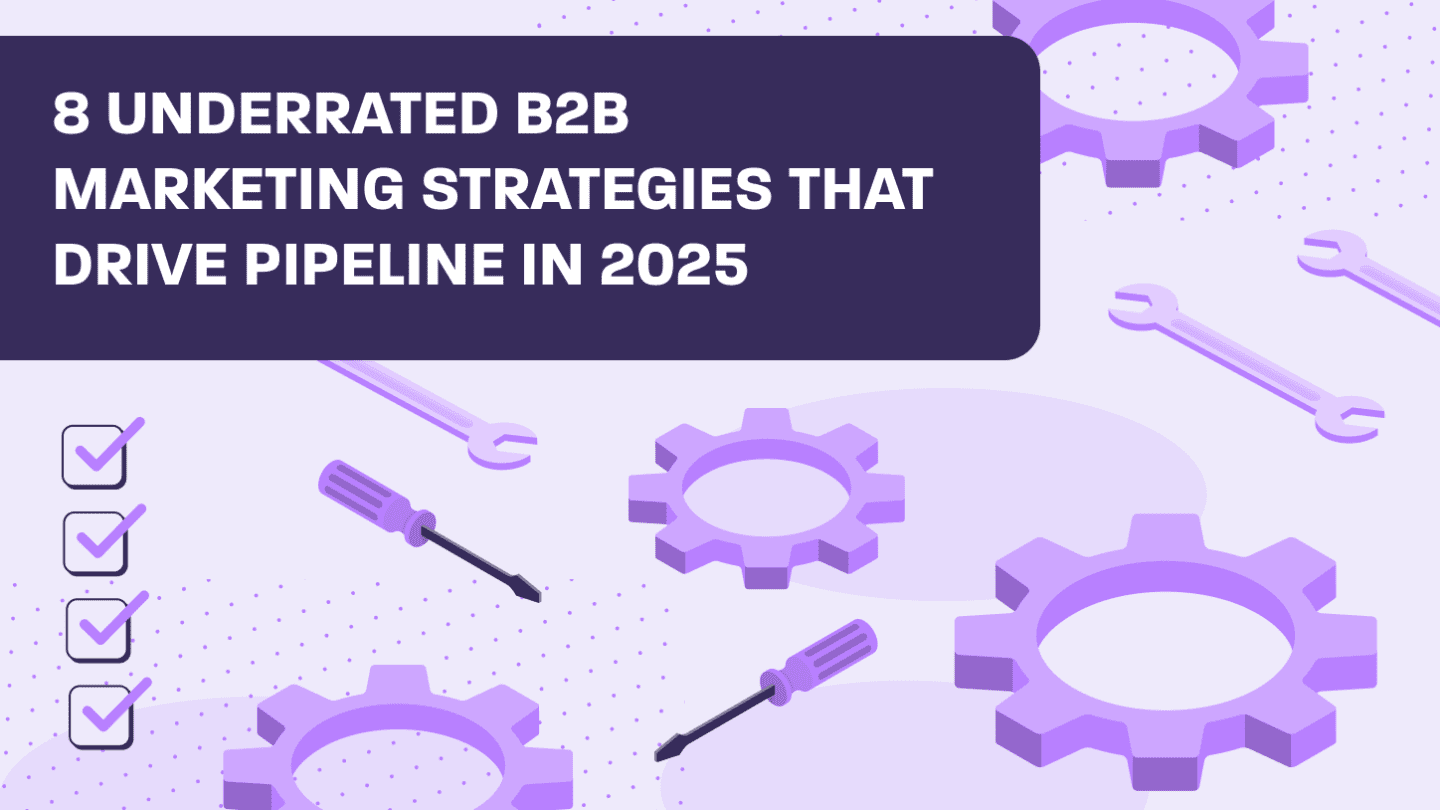The SaaS demo is broken.
Not because sales teams don’t know how to present. Not because product-market fit doesn’t exist. It’s broken because buyers have fundamentally changed how they want to learn about software, and most go-to-market teams are still acting like it’s 2015.
If you’ve noticed prospects going cold after scheduling demos, or felt like you’re pitching to people who seem interested but never convert, you’re not alone. Across SaaS communities, founders are reporting the same pattern: demos that go great on paper but lead absolutely nowhere.
The problem? By the time you get them on a call, they’re either already convinced or they’ve already disqualified you. And most of the time, you never even get the meeting.
The Buyer Behavior Shift Nobody’s Talking About
Buyers are exhausted.
They’re drowning in back-to-back meetings, Slack notifications, and decision fatigue. The last thing they want is another 30-minute demo where a stranger walks them through features they could evaluate on their own time.
The real issue isn’t your pitch. It’s that you’re competing with inertia. Buyers aren’t comparing you to your competitors—they’re comparing you to the mental and operational cost of making any change at all. When the friction of learning about your product feels higher than the pain of their current solution, they’ll stick with “good enough.”
According to Gartner’s research on B2B sales, by 2030, 70% of routine sales tasks will be automated. Buyers already expect to self-educate through interactive tools rather than sit through presentations. If your go-to-market motion requires a human to explain value before a buyer can experience it, you’re already behind.
The data backs this up:
- Buyers spend only 17% of their purchase journey talking to vendors
- They complete 83% of the buying process before ever reaching out to sales
- Most B2B buyers now prefer self-service exploration over scheduled calls
This isn’t laziness. This is efficiency.
When Demos Work Great But Nothing Closes
Here’s a scenario playing out across the SaaS world: founders running dozens of demos where prospects seem engaged, ask good questions, and express genuine interest. Then… silence. Complete ghosting. Zero conversions.
The pattern is consistent: the demo itself wasn’t the problem. The problem was that buyers hadn’t experienced enough value beforehand to justify the friction of scheduling.
Here’s what happens in the traditional flow:
- Buyer discovers your product
- Gets intrigued by marketing site
- Hits a wall: “Book a demo to see more”
- Schedules (maybe)
- Shows up (50/50)
- Sees value (finally)
- Goes dark
Why? Because they needed to see the product before committing calendar time, not after.
Think about it from the buyer’s perspective. They’re not sure if your solution actually addresses their specific workflow. They don’t know if it’ll mesh with their tech stack. They haven’t figured out if the learning curve is worth it. But to find out, they have to:
- Fill out a form
- Wait for a response
- Coordinate calendars across multiple stakeholders
- Block 30-60 minutes
- Sit through a presentation that might be completely irrelevant
That’s a massive ask for someone who’s just trying to figure out if you’re worth their time.
Buyers want control. They want to click around, test scenarios, and disqualify themselves quietly if it’s not a fit—without wasting anyone’s time or having an awkward “thanks but no thanks” conversation.
When buyers can’t see how your product fits their exact workflow without sitting through a pitch, they’ll default to the path of least resistance: doing nothing.
The Case for Ungated Interactive Demos
This is where interactive demos change everything.
Not gated “request a demo” forms. Not static screenshots with arrows. Not explainer videos narrated by your VP of Sales.
Interactive demos that let buyers:
- Click through real workflows
- Test their specific use case
- Experience value in under 3 minutes
- Share with stakeholders without a meeting
When Walnut analyzed demo engagement across hundreds of customers, the pattern was consistent: ungated, self-serve demos drove 3x more qualified pipeline than traditional demo requests. Why? Because buyers who engage with interactive demos before talking to sales show up already sold on the problem you solve.
They’re not asking “What does this do?”
They’re asking “How do I implement this?”
That’s a completely different conversation.
The shift is subtle but critical. Traditional demos force you to convince someone who’s skeptical. Interactive demos let buyers convince themselves—and then come to you for validation and implementation guidance.
Where to Place Interactive Demos in Your Funnel
Getting this right means rethinking your entire demand capture strategy.
Top-of-funnel: Homepage hero section
Don’t bury your interactive demo behind a “Resources” tab. Put it front and center. Let first-time visitors experience your product within 10 seconds of landing on your site.
Example CTA: “See how [Product] works in 60 seconds — no signup required”
Mid-funnel: Outbound sequences
Instead of “Can I get 15 minutes on your calendar?” try: “I built a quick 2-minute walkthrough showing how [Company] could use [Product] to solve [specific pain]. Takes 90 seconds to click through: [link]”
Pre-demo nurture
For prospects who do book a demo, send an interactive preview 24 hours before. This ensures they show up informed and the conversation starts at value, not features.
Post-demo follow-up
After the call, don’t send a deck. Send a customized interactive demo that walks through exactly what you showed, so they can reshare it internally without scheduling more meetings.
This solves one of the biggest objections in enterprise sales: “I need to run this by my team.” Instead of playing calendar Tetris to get everyone on a call, send them a link they can explore async.
Sales enablement
Arm your AEs with interactive demos they can customize for each prospect. Instead of generic pitch decks, they can show personalized workflows that match the buyer’s exact use case.
The difference? Buyers engage on their terms, at their pace, and with the ability to loop in decision-makers without coordination overhead.
Revenue Impact: Shorter Sales Cycles, Higher Intent Calls
Let’s talk results.
Companies that implement interactive demos earlier in the funnel see:
- Shorter sales cycles — because buyers arrive pre-educated
- Higher demo-to-close rates — because only serious buyers book time
- More internal shares — because stakeholders can self-educate without sitting through another meeting
According to Gartner’s Future of Sales 2030 report, 80% of sales leaders will consider AI integration and self-serve tools critical for competitive advantage. Interactive demos aren’t a “nice-to-have” anymore. They’re table stakes.
And the impact goes beyond top-line revenue. When sales teams only talk to buyers who’ve already seen the product work, conversations shift from “convince me this works” to “help me implement this.”
Your AEs spend less time explaining basic functionality and more time addressing real objections and implementation questions. Your discovery calls are more efficient because buyers have already self-qualified on core features.
That’s when deals accelerate.
The Real Cost of Gating Your Demo
Every “Book a demo” button without a self-serve alternative is a leak in your funnel.
You’re asking buyers to:
- Fill out a form
- Wait for a confirmation email
- Coordinate calendars
- Sit through a presentation
- Then decide if it’s worth continuing
Meanwhile, your competitor lets them click through a live environment in 90 seconds.
Who do you think wins?
The founders who figured this out aren’t running more demos. They’re running better demos—with buyers who already understand the value and just need help closing the gap between interest and implementation.
The reality is this: you can’t convince someone to care. But you can make it stupid-easy for them to see if they should care. And if they don’t? They’ll self-select out without burning your sales team’s time on unqualified calls.
What This Means for Your GTM Motion
If you’re still gating your product behind demo requests, you’re optimizing for the wrong metric. You’re measuring “meetings booked” when you should be measuring “time to value.”
The best SaaS companies in 2025 aren’t the ones with the slickest pitch decks. They’re the ones that let buyers sell themselves—and then step in to help them buy.
Here’s the mental model shift: your job isn’t to explain your product. Your job is to create an environment where buyers can discover value on their own terms, at their own pace, and then raise their hand when they’re ready to move forward.
Traditional demos ask: “Can I have 30 minutes to show you why you should care?”
Interactive demos say: “Here’s how it works. Explore. If it’s relevant, let’s talk implementation.”
One is a sales pitch. The other is a buying experience.
That’s the future. And it’s already here.
Key Takeaways
✅ Buyers don’t want to sit through demos until they’ve already decided you’re worth their time
✅ Ungated interactive demos reduce friction and drive more qualified pipeline
✅ Place demos at every stage of the funnel—not just behind a “Contact Sales” wall
✅ Shorter sales cycles happen when buyers self-educate before talking to your team
✅ The companies winning in 2025 make it easy for buyers to experience value in under 3 minutes
FAQ
Q: Won’t giving away demos for free hurt lead quality?
No. It filters out low-intent browsers and surfaces high-intent buyers who actually engage with your product. You’re not losing leads—you’re gaining time with the right ones.
Q: Should we completely remove “Book a demo” CTAs?
Not necessarily. Offer both: “Explore on your own” and “Talk to sales.” Let buyers choose their path based on where they are in the buying journey.
Q: How do we measure success with interactive demos?
Track completion rates, time spent, and which features prospects engage with most. Then correlate that with deal velocity and close rates.
Q: What if our product is too complex to show in a self-serve demo?
That’s a sign you need to simplify your narrative, not that self-serve won’t work. Focus on one killer workflow that solves one clear problem. You can expand from there.
Q: Do interactive demos work for enterprise sales?
Yes—especially for enterprise. Decision-makers don’t have time for generic pitches. Letting them explore on their own (and share internally) accelerates consensus-building across stakeholders.
Want to see this in action? Explore how Walnut helps sales teams create interactive demos that buyers actually engage with.





